Egurtzegi - Dwellings in Co-housing Units (Usurbil)
Conceptual framework.
- The design of the Usurbil project will be based on the following principles:
- People, their welfare and the quality of care constitute the central axis that vertebrates this project. Consequently, the ethical dimension and the guarantee of the exercise of the rights of people with disabilities or dependence will determine all the activity of the center. All of this is in line with the principles of the ACP.
- Transdisciplinary interconnection that links and develops a network of initiatives in this field of knowledge, coming from different disciplines and systems (mainly social or health).
- Knowledge management around different areas that address the specificity of each of the dependency profiles to be addressed from a psychosocial and socio-health perspective.
- Generation and validation of good practices of care and innovation in each of its facets of activity, allowing the transfer of rigorous and referential knowledge.
- Networking model that serves to:
- Achieve the fulfillment of its objectives focused on the design of an itinerary of change in the care model more centered on people's preferences.
- Generate network being part of the local ecosystem of care in Usurbil.
General features of the Innovation Center Project and housing with care in Usurbil.
- As has been pointed out, the innovative character of this project is determined by a set of characteristics, of which we point out the most important ones:
- Construction of a gerontological center of Accommodation with care that for the first time will be designed from the conceptual framework "housing" and not from the traditional institutional model based:
- Architectural design that makes the residential model compatible with the modulation of spaces that guarantee "living like at home", introducing the concept "housing" that replaces the concept of habitation and that really guarantees the existence of a private space in which communication and accompaniment with families, friends or volunteers acquires the necessary sense of "privacy" that the traditional institution cannot achieve.
- The model will be designed from the concept of living units in which 18 people will live. These units will be subdivided into two of 9, with the conviction that in the near future professional profiles and ratios will be reviewed to better adapt them to this structure.
- Construction of a day center in which the aim is to guarantee continuity of care from the intervention at home with the caregivers and in coordination with the center's activity. It will be an open, flexible, intensive resource.
- In these facilities it is intended to address a process of innovation in the daily life of people from a set of aspects such as :
- An external and internal design that facilitates daily life: standardized, housing model, intimate spaces, adequate lighting to the characteristics of the people who will inhabit them ... All this from the design of a research process that provides sufficient scientific evidence to support this cultural change.
- A daily activity based on the realization of "meaningful" activities and centered on the people who live there from their different roles: elderly people who need care, professionals, family members, volunteers .....
- It is also intended to deepen the essential process of organizational change imposed by this model of care:
- Identifying the appropriate professional roles, as well as their competencies and skills.
- Organizational models based on collaboration and trust among workers, facing the necessary process of horizontalization of the organization.
The accommodations are composed of a small access distributor with space to store the wheelchair, walker or other aids; which also allows to be personalized with objects or furniture representing each person, thus facilitating the orientation and identification to those people with dementia. In addition, each dwelling includes a small "courtesy" kitchen, which helps to maintain the concept of housing as opposed to the room. The main living area consists of a bedroom and living room, separated by a closet to promote privacy, but avoiding the use of partitions that reduce space and the feeling of spaciousness. Finally, there is an adapted bathroom of sufficient size to help the caregivers to carry out the necessary tasks. All the space of the accommodation is considered private and therefore susceptible to be furnished and decorated by the user. The personal objects and furniture used to decorate one's own home become indispensable elements to create the "new" home, since they represent our way of life and store the memories linked to it.

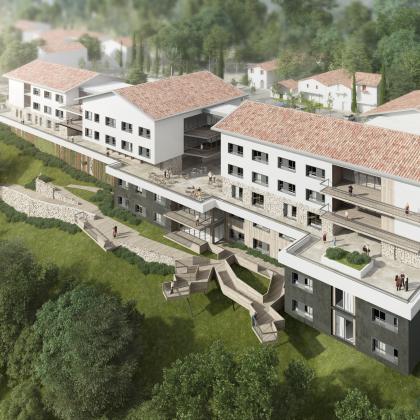
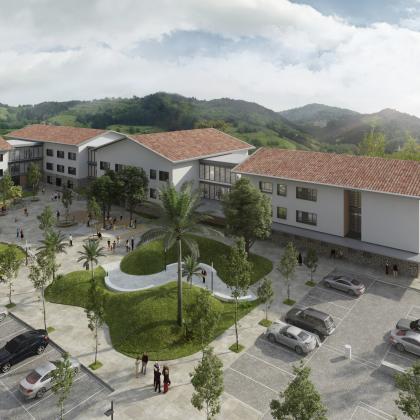
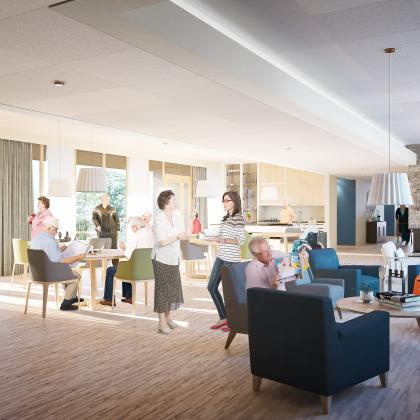
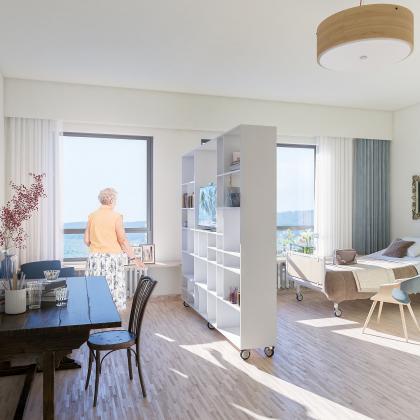
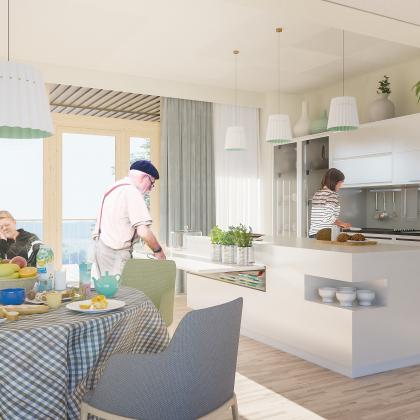
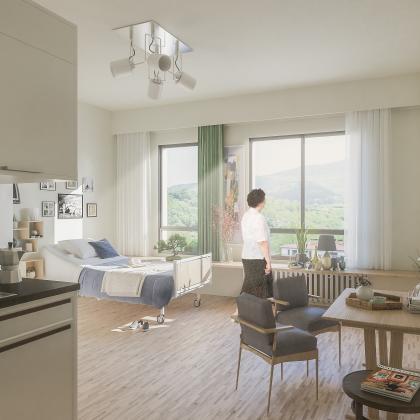
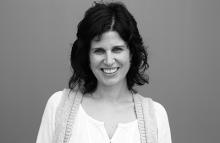
(1).png)
.png)